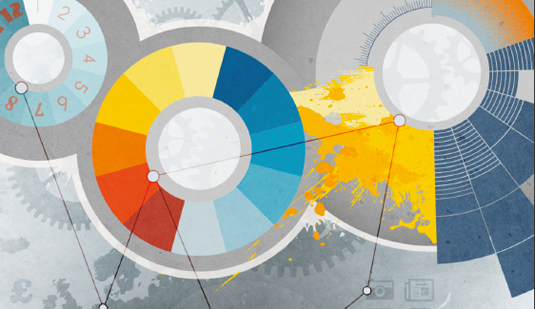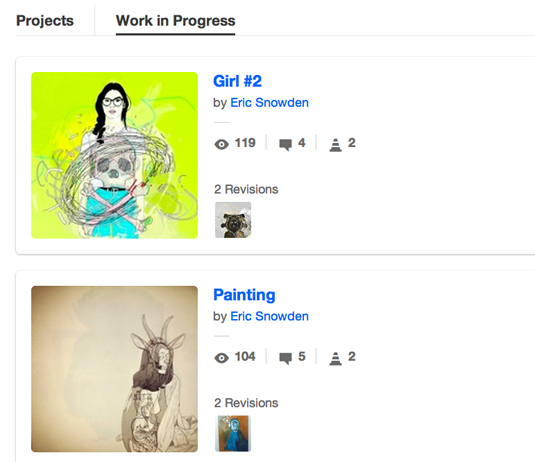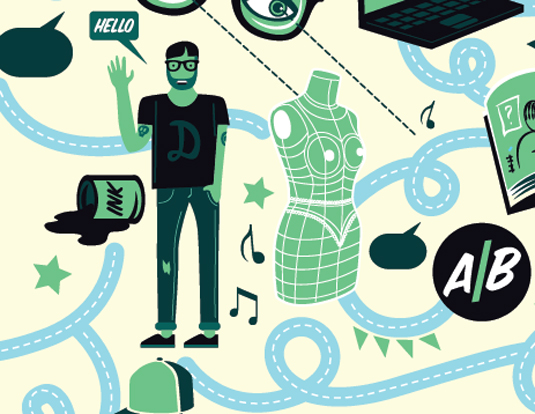Collaborative Engineering Tool Design Process
How to create the perfect design process
You might be a whizz with Photoshop, be an amazing illustrator or possess mad CSS and JavaScript skills. But to harness your creativity and imagination, you need a solid design process to get your ideas from inception to production. Otherwise all your talents will go to waste and lesser - but more organised - mortals will steal your spot. So where do you start? Well, let's assume your quote has seen the green light, and you've received the detailed brief from your client. Now we'll take you through four distinct stages of a project, which form the bedrock of any design process...
01. Research

For a successful outcome, you need to begin the project by reviewing and further researching:
- the client's business goals, mission, values and brand equity
- competing brands
- the intended audience
You might think that some of these areas don't apply to you, or your project, but they do. These introductory research stages are vital for every designer.
Research can throw up some unexpected results. It may show you, for example, that the problem you need to solve is not the one the client was initially focused on. You may have to carry out further research to justify why your time is better spent on a more critical issue they may have overlooked. Far from upsetting your client, this should demonstrate an engagement in the project and attentive service.
02. Define and develop

Once you're satisfied you have carried out sufficient research, you can begin putting your skills into practice. During the 'define and develop' stage, you identify the problem you're trying to solve and begin working towards your project agenda. This is the fun bit... developing ideas into a final outcome is one of the main reasons we love our jobs so much.
Sometimes a very large brief can be quite intimidating. In this case, think about dividing things up into a series of smaller tasks and objects. This can be a good way of making seemingly insurmountable problems or a terrifying workload seem less daunting.
Visual concepts
As designers, we think visually. So it's a good idea to develop visual concepts that reflect the objectives and outline of the brief. Collect images relating to the aims of the project - Pinterest is a good tool for this. Also consider using mood boards.
The idea-generating stage will often move very quickly. If it all moves too fast, then take a breath, stand back, and refer again to the initial brief and research; this should steer you back on track.
Presenting ideas
As a creative, using your professional judgement, you should begin filtering your various ideas and designs, retaining the strongest relevant material. (Personally, I don't like to offer more than three ideas.)
Present your work to the client in their preferred method of communication. Justify each design with the research you have previously gathered. Await the feedback. This is the important stage of selling your idea to the client, so make sure to communicate well.
Getting feedback
The quicker you receive the client feedback, the better to keep the momentum and creative juices flowing. It's a good idea at this point to confirm the next date and time of communication.
I like to make sure the feedback is always in writing. If you get it face-to-face, send a follow-up email stating what occurred in the meeting and ask them to approve
03. Refine

So the client's feedback has just popped into your inbox. Now it's time to improve on the designs, fix any errors and fine tune your designs. Gradually, all the pieces should start to fall into place.
One thing that can help you refine your design to perfection is testing. Get a test audience to interact with what you've created. A fresh set of eyes is always beneficial and will usually spot something you haven't thought of (or spot a typo no one else had notice).
Face to face
It's always best to test a design face-to-face, but if that's for some reason impossible, consider submitting the project to Behance's 'work in progress' section. Upload a snapshot of your work in progress and get comments from the Behance community; this gives you the ability to get instant feedback. Private sharing is also an option.
Once you've come as far as you think you can go, review the design and prepare to deliver the final product.
04. Deliver

However good your design, you'll need to sell it to your client, which is why a face-to-face presentation is the ideal.
Successful presentations are well planned and practised (maybe 80% planning and practicing and 20% executing effective slides). There are plenty of resources to help you assemble a great presentation, but the most important thing is being so comfortable with your content that every pause, every reaction, is natural.
If the client is happy then you're ready to launch. If they're not then, depending on what sort of feedback, you'll have to repeat one or more of the previous stages until everybody is on side.
Roll your own
These four stages are the bare bones around which you should develop a design process that is personal to you and adapts flexibly to the different clients, projects and briefs you take on. Developing a solid design process may seem like a pain but will help you evolve throughout your creative career.
Technology, as a tool, is constantly changing and there will always be new platforms for various stages of the creative process. If the process you've developed is working, then by all means stick to it, but constantly review and refinement of your process will help keep you fresh and work more productivity and creatively.
Words: Aaron Kitney
Aaron Kitney is a freelance graphic designer and art director based in London and Vancouver. He specialises in branding, identity, web design, publication design, album covers, packaging and book design.
Like this? Read these!
- 101 Photoshop tips, tricks and fixes to try today
- The best free web fonts for designers
- Amazing examples of experimental design
Do you have any tips for smoothing the design process? Share your thoughts in the comments below!
Related articles
Collaborative Engineering Tool Design Process
Source: https://www.creativebloq.com/design/perfect-design-process-1131825
Posted by: martinlabould.blogspot.com

0 Response to "Collaborative Engineering Tool Design Process"
Post a Comment